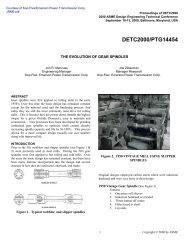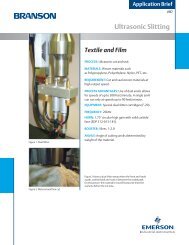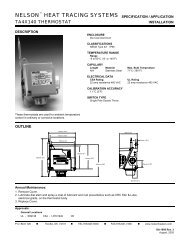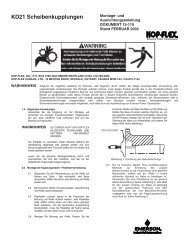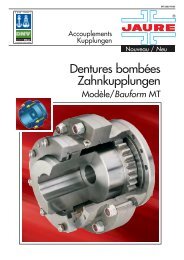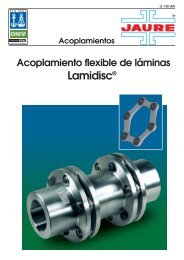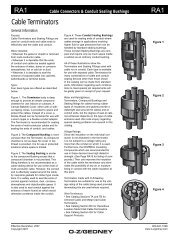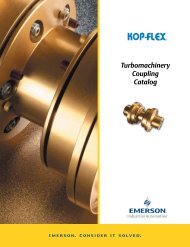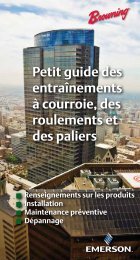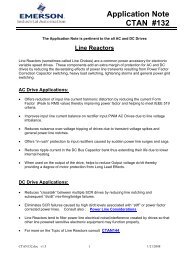Kop-Flex Industrial Coupling Product Catalog - Form 8887E
Kop-Flex Industrial Coupling Product Catalog - Form 8887E
Kop-Flex Industrial Coupling Product Catalog - Form 8887E
Create successful ePaper yourself
Turn your PDF publications into a flip-book with our unique Google optimized e-Paper software.
MAX-C ® Resilient <strong>Coupling</strong>s<br />
Type CB & WB<br />
The Max-C ® <strong>Coupling</strong> series also includes two specially<br />
engineered types, the Max-C CB and WB, designed for<br />
the heavy duty service encountered on applications with<br />
reciprocating or severe impact loading. Each coupling<br />
type, CB and WB, is available with a wide variety of<br />
performance features and options so they can be customengineered<br />
for each application to solve special problems<br />
and provide outstanding operating service.<br />
Contact us with specific information about your application,<br />
and an engineered Max-C ® CB or WB coupling can be<br />
supplied to suit your particular needs.<br />
Design Expertise - from modification of a standard<br />
coupling to a completely new design. <strong>Coupling</strong>s can<br />
be designed to suit a customer’s system - low torsional<br />
stiffness, high load capacity, special space envelope, high<br />
or low inertia, etc.<br />
New, or alternate, materials can be specified to meet<br />
various requirements. Specific rubber compounds can<br />
be developed to suit a specific application - e.g. Viton for<br />
high temperature applications or Neoprene for continuous<br />
exposure to petroleum products.<br />
Engineering Calculations - from basic mass elastic data<br />
to a system torsional analysis. Other calculations routinely<br />
performed include hub/shaft torque capacity, frequency<br />
(lateral, axial, etc.) calculations and component stress<br />
analysis.<br />
TYPE WB<br />
The MAX-C Type WB should be specified for severe<br />
impact or reversing conditions where use of a coupling<br />
with moderately high degree of torsional stiffness (a<br />
lower degree of angular displacement, varying from 1°<br />
to 2° or more) to provide high shock absorbing capacity<br />
is required. The high torques at the moment of impact,<br />
as well as their possible amplifications at other locations<br />
in the drive, usually dictate the use of the Wedge Block<br />
MAX-C. The block tends to fill the cavity and the larger<br />
driving areas of contact between block and blade will<br />
support severe overloads.<br />
TYPE CB<br />
The MAX-C Type CB should be used when resonant<br />
vibration conditions, inherent in reciprocating drives,<br />
dictate the use of a coupling with very low torsional<br />
stiffness (or high degree of angular displacement,<br />
approaching 6° or 7° at peak torque), permitting a large<br />
windup in relation to the vibratory torque. In the Cylindrical<br />
Block MAX-C, there is more space in the cavity or pocket<br />
into which the block may deflect under load, producing the<br />
high resiliency desired. Even greater resiliency or windup,<br />
approaching 14°, can often be achieved with the Type CB<br />
to meet specific applications merely by assembling two<br />
couplings in tandem.<br />
Visit www.emerson-ept.com<br />
55





